Hanoi is undergoing strong growth with more modern works, becoming a dynamic developing city. Besides the modern skyscrapers, Hanoi has old architecture from hundreds of years old, featuring European architectural heritage from the French colonial era, which formed our unique and charming Hanoi.
Architecture
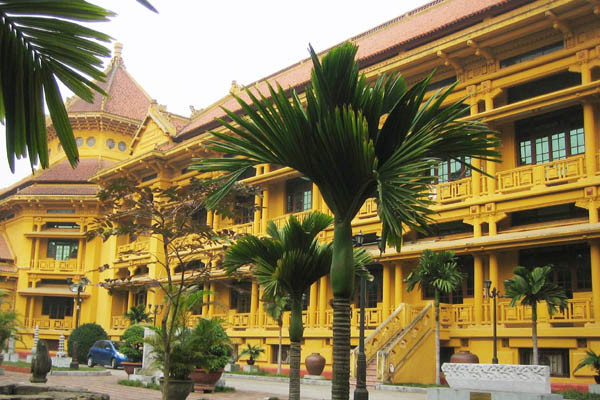
Vietnam History Museum
Visitors to Hanoi cannot miss a chance to glimpse the beautiful architectural works built in the late 19th and early 20th century.
French architecture in Hanoi is rich in style, built in harmony with master planning of sidewalks, trees and natural surroundings, like no other city in Asia.
The typical French architectural work mentioned first is Long Bien bridge across the Red River, formerly named under Indochina Paul Doumer (Pont Paul-Doumer) and constructed in 1903. This bridge is considered to be one of the cultural icons of the capital Hanoi.
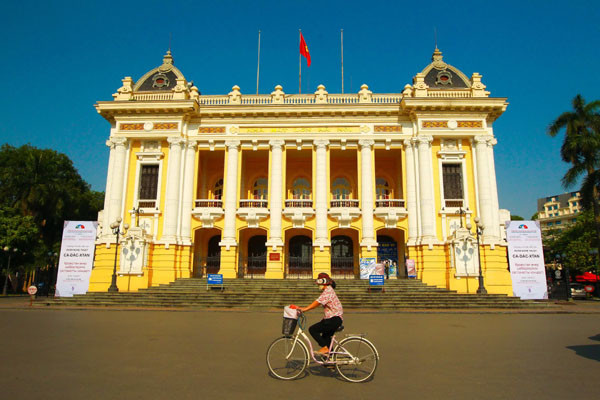
Hanoi Opera House
In the urban area of Hanoi is a range of magnificent French structures such as: the Governor of Indochina (now the Presidential Palace), Tonkin’s Palace (now the government Guest House), Bank of Indochina (now the State Bank of Vietnam), Louis Finot Museum (now the national Museum of history of Vietnam), the Court (now the Supreme people’s court)… Each works has its own special appearance, consistent with the surrounding landscape.
In harmony with the natural and tropical climate, the French have created suitable architectures.
The mansion, villa with hallway, and large gardens surround the main space. For example, the Tonkin Palace built behind an extensive flower gardens, featuring yellow walls and lime green doors.
The Sofitel Legend Metropole hotel is elegant and luxurious with white painted walls and green windows.
Most impressive is the city Opera House designed as a yellow bright palace with balcony, corridors, high windows, roof dome forming an excellent space.
In some works, the French architect offered more traditional village architecture of Vietnam.
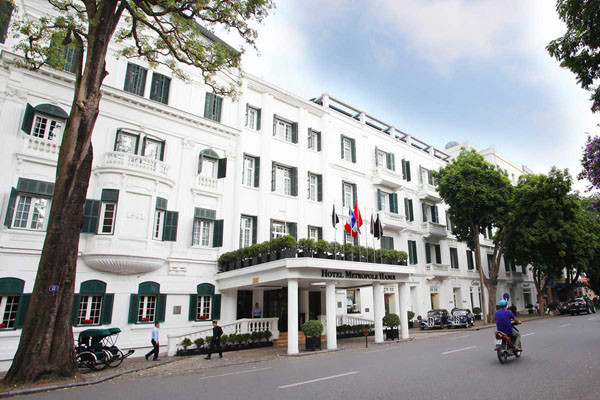
Metropole Hanoi Hotel
The charm of French architecture in Hanoi includes the streets with rows of lovely villas located in the shadow under the trees in some main streets.
Each villa has its own style, with designs from central France on the streets of Phan Dinh Phung, Hoang Dieu, Tran Phu and Le Hong Phong…
The villas like those in the south of France are on streets of Quang Trung, Tran Quoc Toan or Indochina style mansion (adds details to oriental architecture) on Ly Nam De Street..
The baguette: France’s food legacy
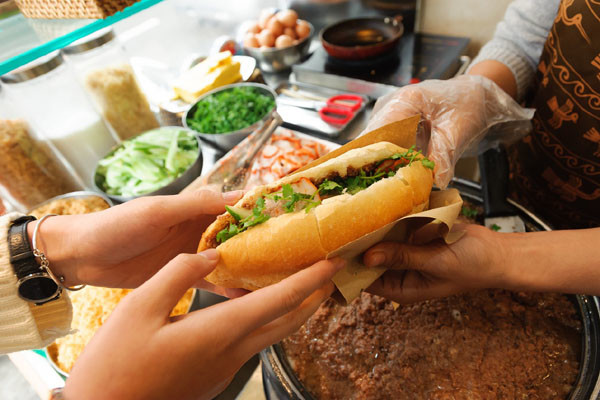
Banh Mi
French cuisine has influenced Vietnamese cuisine, especially the baguette (banh mi – French bread).
French bread was first made in Vietnam to feed hungry soldiers in Indochina, France’s empire which spanned much of Southeast Asia which lasted from 1858 to its crushing defeat in the Dien Bien Phu battle in Vietnam in 1954.
By 1910, little baguettes or ‘petit pain‘ were sold on the streets of Hanoi to people who were on their way to work, and in the years following, meat, vegetables, eggs, pate or fish were put in the bread – banh mi sold all over Hanoi.
Today, in Hanoi, there are many chic cafes serving French baguette croque monsieur and macarons at “Paris prices“, but the $1 banh mi still rules the Hanoi street food scene.
Cyclo
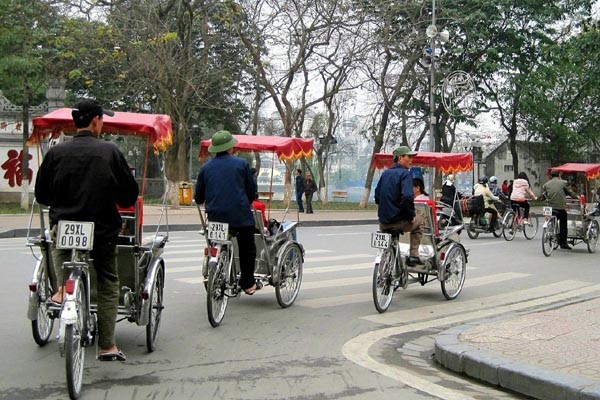
Cyclo around Hoan Kiem Lake
Cyclo (Rickshaw) is now a unique vehicle, which for years made Hanoi distinct.
A lot of foreign visitors to Hanoi choose to use this transport to visit and explore the ancient beauty and the lives of Hanoi residents…
Cyclo was brought to Hanoi in 1939, when it first was used by French and Hanoi mandarins, replacing horse carriage or hammocks.
Gradually, this means of transport became familiar on the streets of Hanoi, and exists to this day.
But now the cyclo is only available for travelers for relaxing trips around the French quarter (old quarter).
By Vietnamnet

